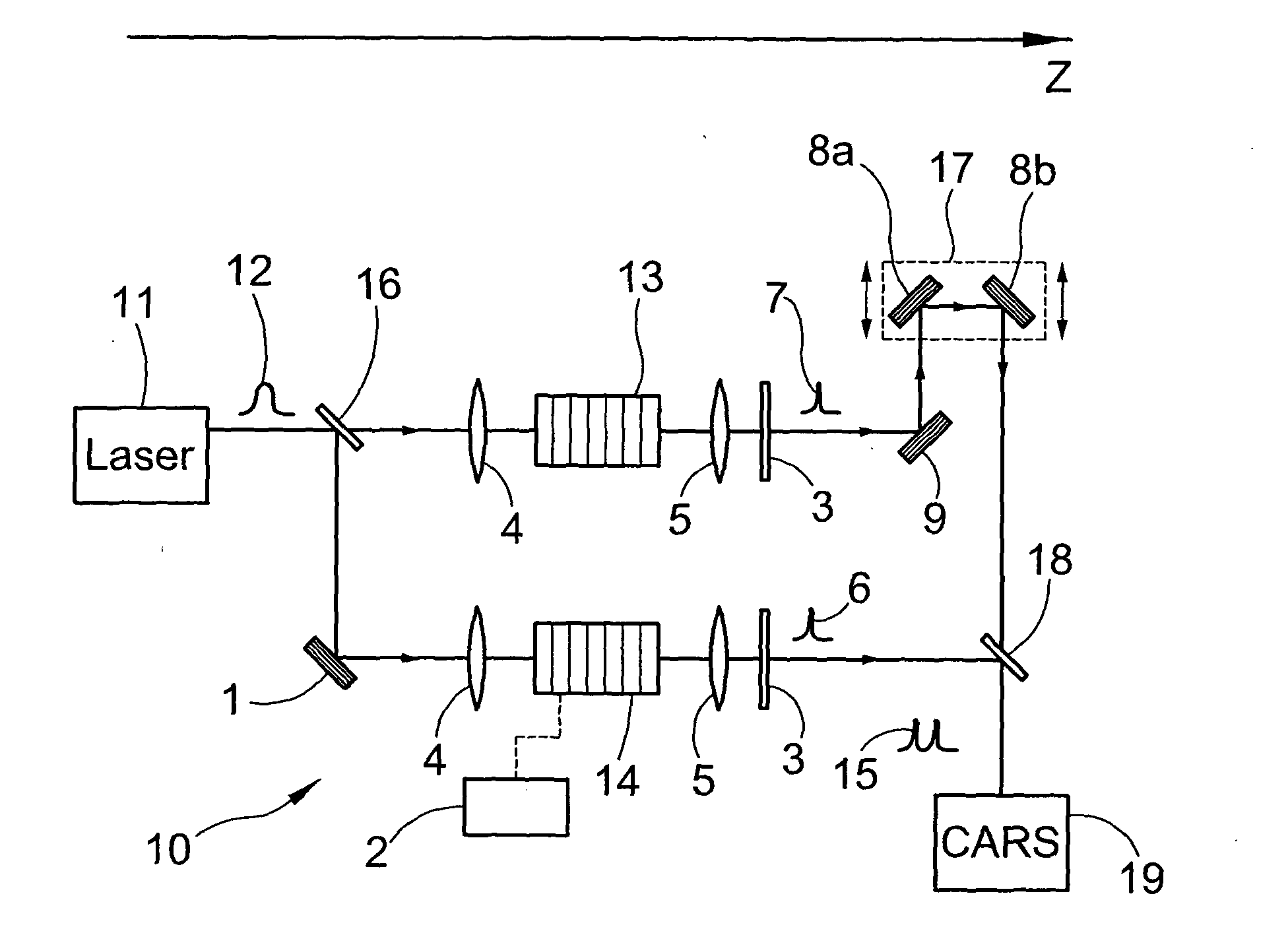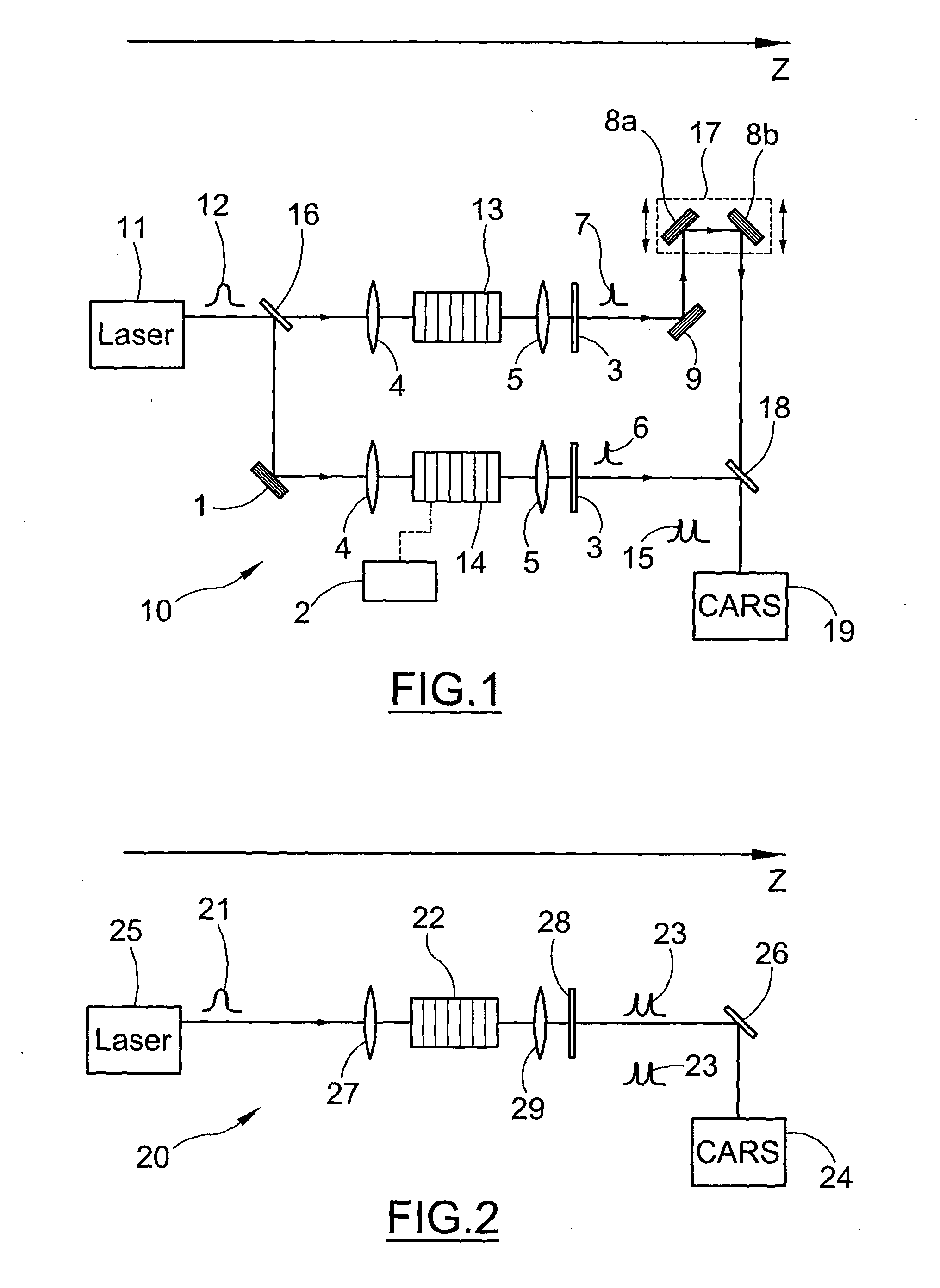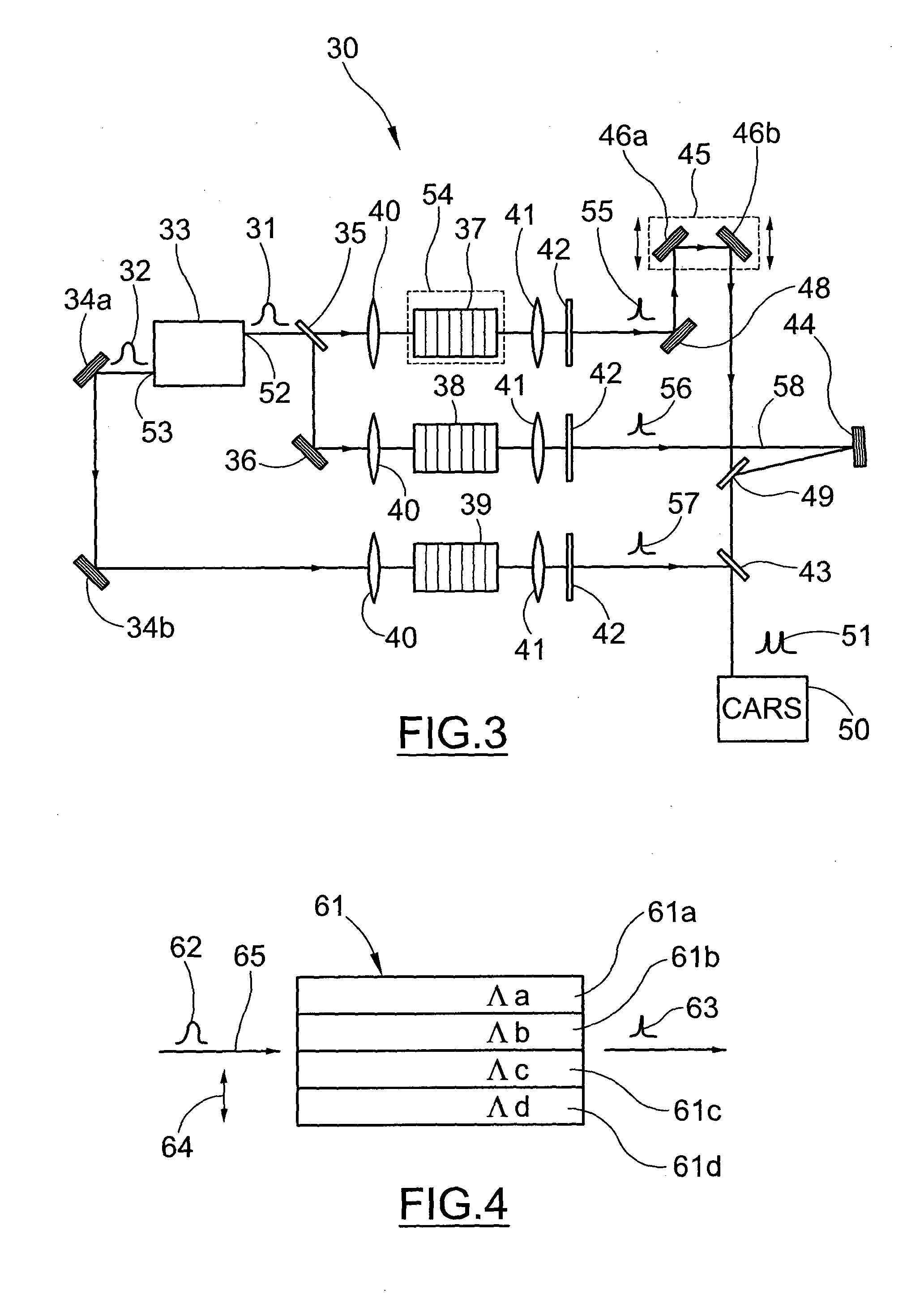System for Generating Raman Vibrational Analysis Signals
a vibration analysis and signal technology, applied in the field of raman vibration analysis signal system, can solve the problems of increasing the complexity and cost of this cars apparatus, increasing manufacturing costs, and adding complexity and bulk to the measuring apparatus, so as to increase manufacturing costs and complexity. the effect of bulk
- Summary
- Abstract
- Description
- Claims
- Application Information
AI Technical Summary
Benefits of technology
Problems solved by technology
Method used
Image
Examples
Embodiment Construction
[0036]FIG. 1 is a diagrammatic view of a system 10 for generating pulses for CARS vibrational spectroscopy / microscopy according to an embodiment of the present invention. A laser source 11 is apt to generate pulses 12 within a band of fundamental frequencies, and of duration of femtosecond (fs) order. Preferably, the laser source is apt to generate pulses of from 5 fs to 100 fs, preferably of from 10 fs to 50 fs. For example, the laser source is a Ti:sapphire laser oscillator capable of emitting pulses with a FWHM of 20 fs at 100 MHz, centered at a wavelength of 800 nm. The incoming beam is split by an optical power divider device 16, such as a 50 / 50 beam splitter, which splits the power of beam 12 to form two pulse beams, a first beam incident upon a first nonlinear crystal 13 and a second beam incident upon a second nonlinear crystal 14, optionally after being deflected by a mirror 1. According to the present embodiment, the first and second nonlinear crystals form a second-harmon...
PUM
 Login to View More
Login to View More Abstract
Description
Claims
Application Information
 Login to View More
Login to View More - R&D
- Intellectual Property
- Life Sciences
- Materials
- Tech Scout
- Unparalleled Data Quality
- Higher Quality Content
- 60% Fewer Hallucinations
Browse by: Latest US Patents, China's latest patents, Technical Efficacy Thesaurus, Application Domain, Technology Topic, Popular Technical Reports.
© 2025 PatSnap. All rights reserved.Legal|Privacy policy|Modern Slavery Act Transparency Statement|Sitemap|About US| Contact US: help@patsnap.com



